The city of Waterford was founded by Vikings around the year 900. With 1,000 years of history behind it, you’ll find that narrowing down the best things to do in Waterford is an enjoyable challenge.
All that Viking history is obviously to the fore, from the Viking Triangle to the name itself—meaning “Weather Fjord”. The town’s medieval period has left it with grand churches and civic buildings, while its industrial past is reflected in its well-known glass factory.
Waterford sits amid Ireland’s Ancient East, within easy reach of castles, historic houses, and the beautiful Irish countryside. You can drive the coast, cycle the Waterford Greenway, or walk around lovely towns or villages.
Here is a list of the best things to do in Waterford.
Travel Through History at the Bishop’s Palace
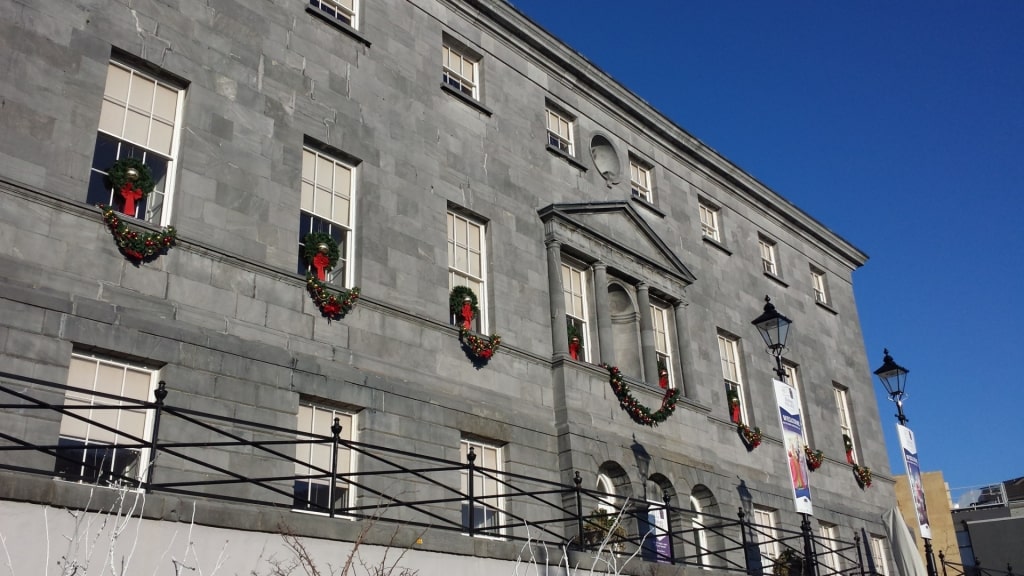
Bishop’s Palace Photo by Waterford Treasures on Wikimedia Commons, licensed under CC BY-SA 4.0
Any admirer of Palladian architecture will enjoy visiting this grand building in Waterford’s Cathedral Square. Used as the residence of the city’s Anglican bishops between 1743 and 1919, it is now a museum dedicated to the town’s Georgian period.
Its bottom two floors are filled with 18th century treasures, including glass, silver, furniture, and paintings. The top floor takes in local and national history up to the 1970s, with an eclectic collection of exhibits.
Highlights include the only surviving example of 12 gold mourning crosses, commissioned by his mother, marking Napoleon’s death in 1821, and the 18th-century Penrose Decanter, the oldest surviving piece of Waterford Crystal.
Irish-Americans will also want to see the collection of artifacts relating to Thomas Francis Meagher, leader of the Irish Brigade in the U.S. Civil War. The first man to raise the Irish tricolor flag, which he did here on The Mall in his native city in 1848, he is also commemorated by a quirky equestrian statue nearby.
Unleash Your Inner Viking at Reginald’s Tower
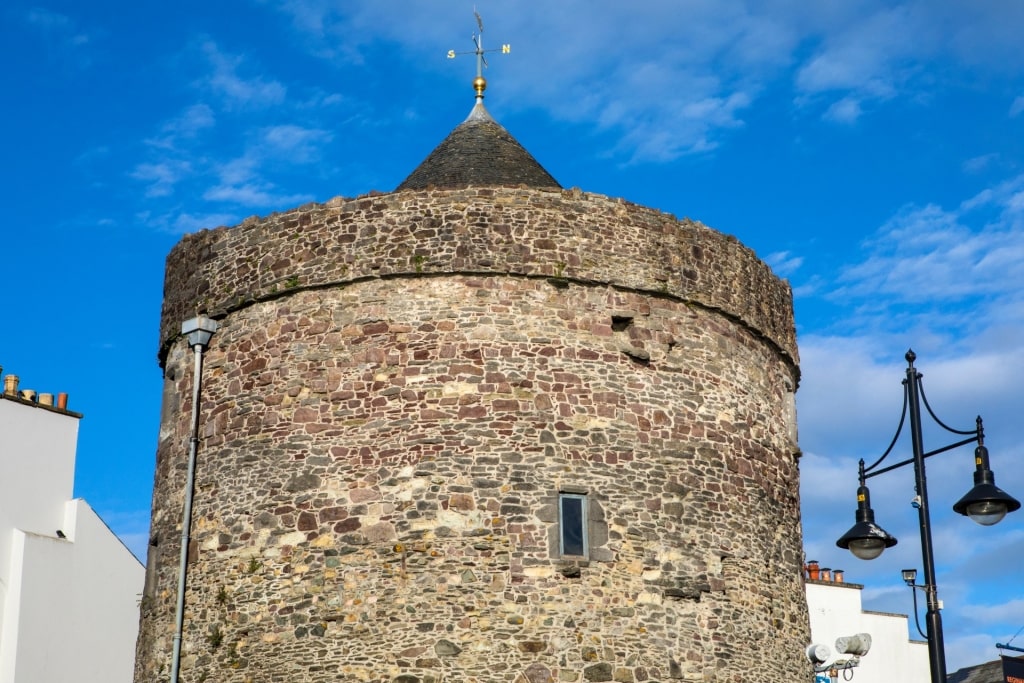
Reginald’s Tower
Standing on the site of an old Viking fort, Reginald’s Tower was built as part of Waterford’s medieval defensive walls. Possibly named for the Norman ruler of the time, it has been in continuous use for 800 years, making it Ireland’s oldest civic building.
The 13th-century round tower (the largest of six still standing) is a lot bigger inside than it looks. Over the centuries, its three floors have served as a prison, arsenal, mint, and a residence.
Take the winding stone steps to the top floor to see an interesting exhibition about the tower’s—and Waterford’s—history. It pays a lot of attention to the Viking history of the town.
From the top, you have a view over the town, and down onto a replica Irish-built Viking longboat—named “Vadrarfjordr”, the Viking name for Waterford. The tower makes one apex of Waterford’s Viking Triangle.
Read: Exciting Things to Do With Kids in Ireland
Touch History at the Medieval Museum
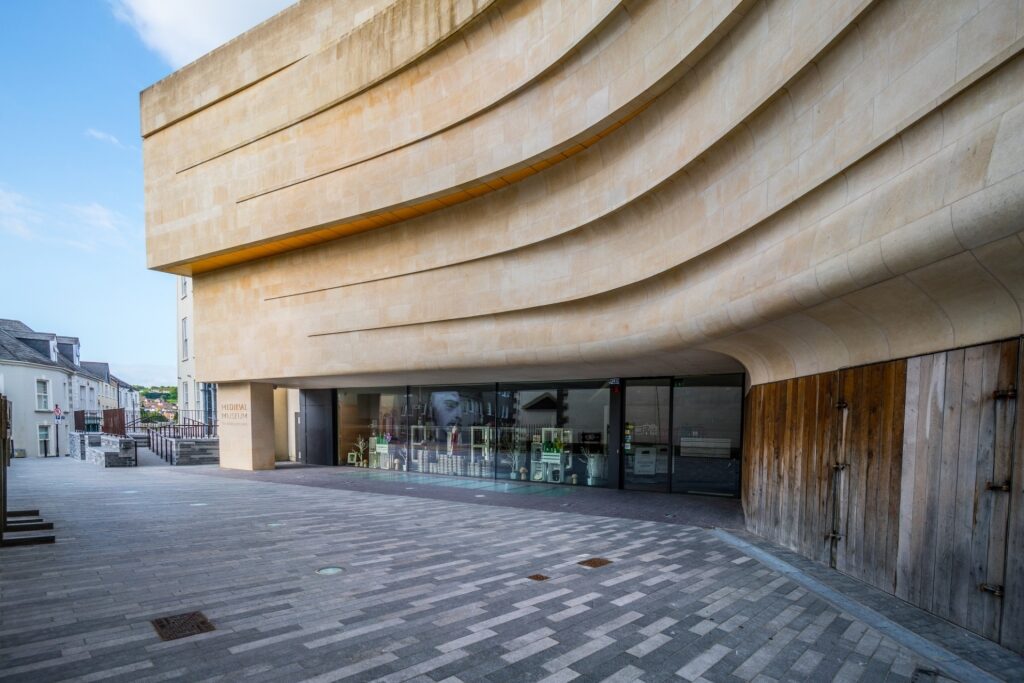
Medieval Museum Photo by William Murphy on Flickr, licensed under CC BY-SA 2.0
“Ireland’s only purpose-built medieval museum” may sound slightly dry but it contains several incredible artifacts that are well worth seeing.
Priceless 15th century embroidered vestments, a civic sword presented by King Edward IV, and a “Relic of the True Cross” are among the highlights.
The silk vestments were woven in Florence from panels embroidered in Bruges, and form part of an exhibit called “Heaven’s Embroidered Cloths” (extra points here if you recognize the reference to poet W.B. Yeats).
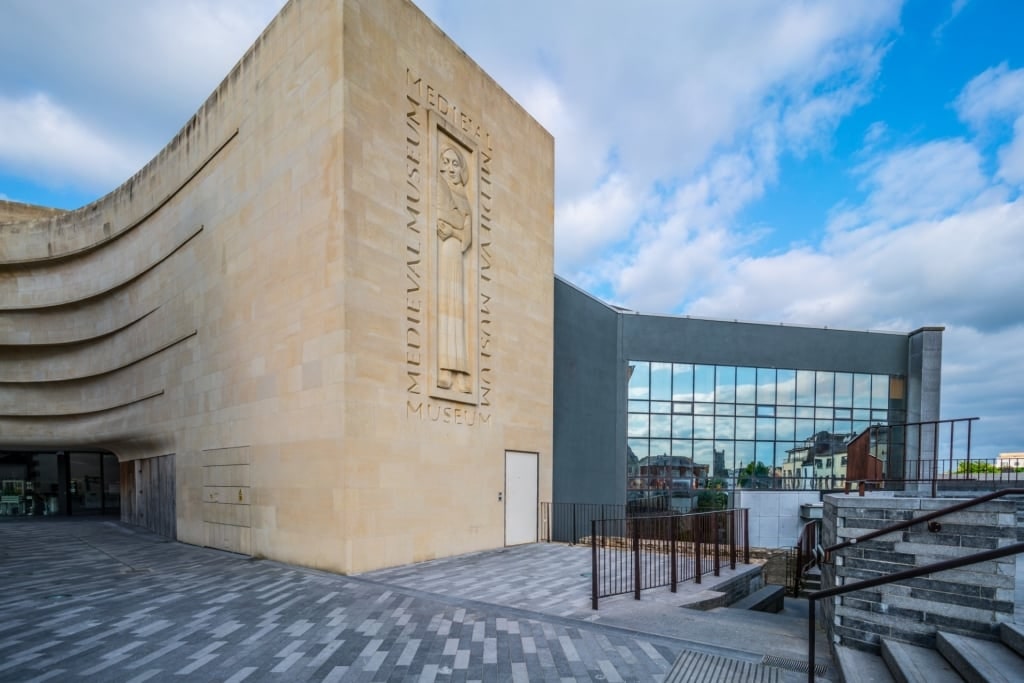
Medieval Museum Photo by William Murphy on Flickr, licensed under CC BY-SA 2.0
The sword was presented to the city by the British monarch in 1462, along with two maces which are now the oldest in Ireland. They are displayed alongside the city’s 550-year-old charter.
The museum has many more fascinating objects on display, including several excavated in the city itself in more recent years. It also incorporates two medieval structures, the 13th-century Choristers’ Hall, and 15th-century Mayor’s Wine Vault.
Be Awed by the Rock of Cashel
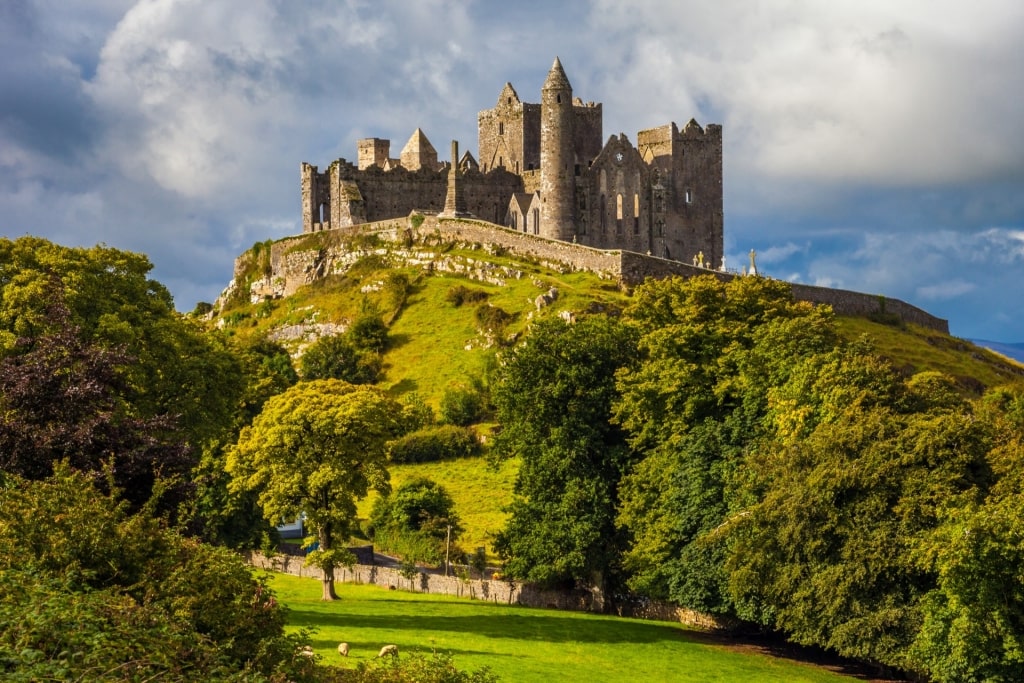
Rock of Cashel
The Rock of Cashel is about an hour’s drive from Waterford, and a journey back in time over 1,000 years. Brian Boru is said to have been crowned High King of Ireland here in 978.
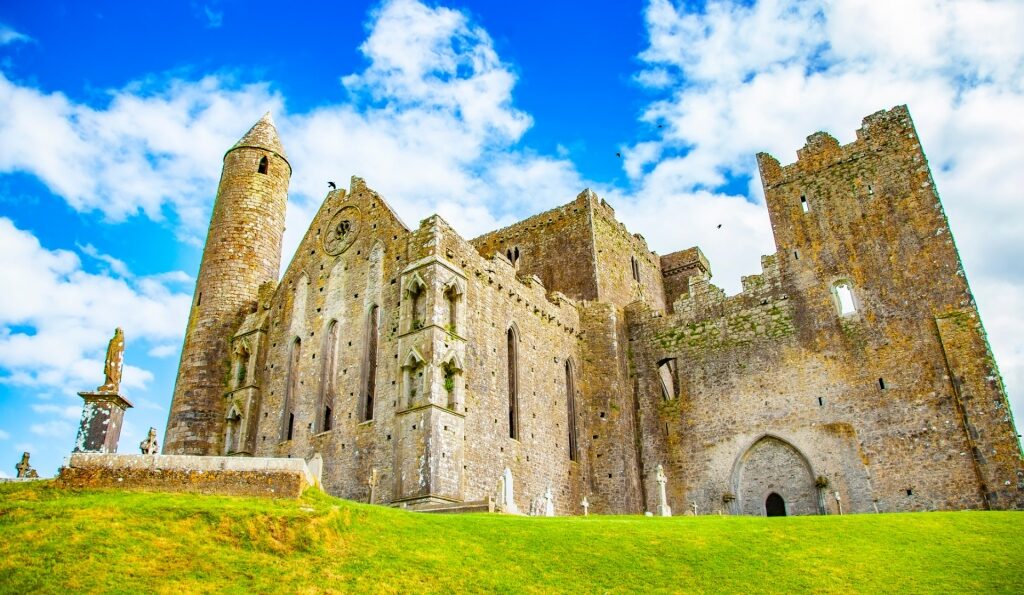
Rock of Cashel
The easily-defended rock was then made his capital, but passed to the church in 1101. While the earliest buildings here dated to around the fifth century, the oldest surviving one is the impressive round tower from c.1100.
It dominates a set of medieval buildings that includes Cormac’s Chapel, notable for having Ireland’s only surviving Romanesque frescoes. The chapel was built for King Cormac Mac Carthaigh about 1130 in Irish Romanesque style.
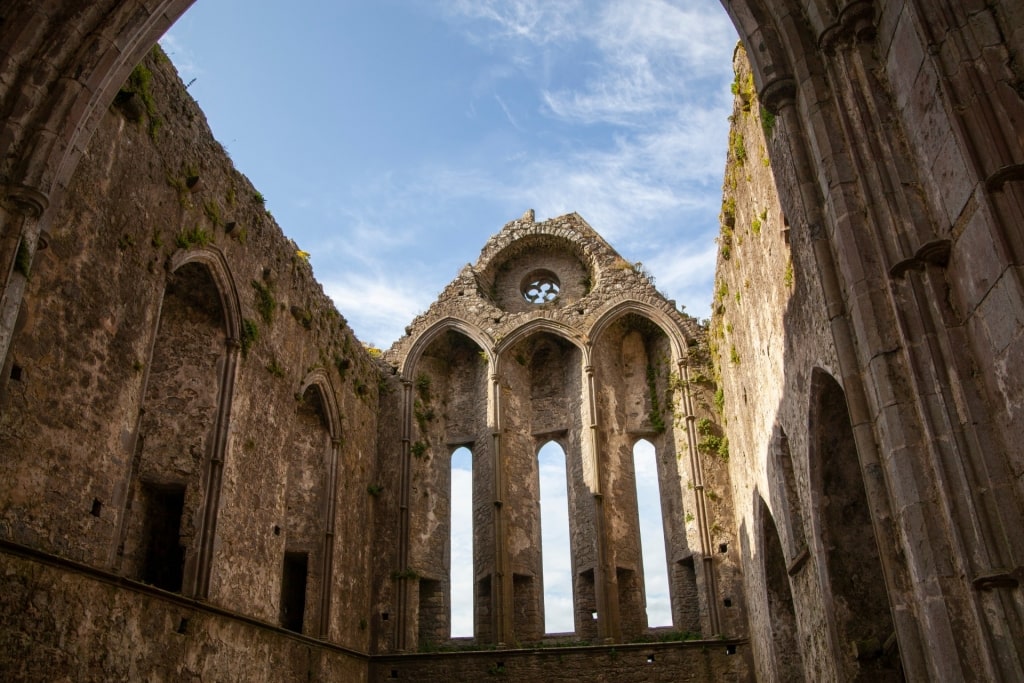
Cathedral
Other striking buildings include the roofless 13th-century Cathedral, with a strong European influence. It’s the largest building on the rock, but it’s the details that stand out, from the carved heads high on the capitals, to the evocative gravestones.
The buildings are surrounded by a wall, within which are many other graves. The large cemetery is a good place to be alone while enjoying spectacular views of the rich green Tipperary countryside.
Read: What Is Ireland Known For?
Stride the Battlements of Cahir Castle
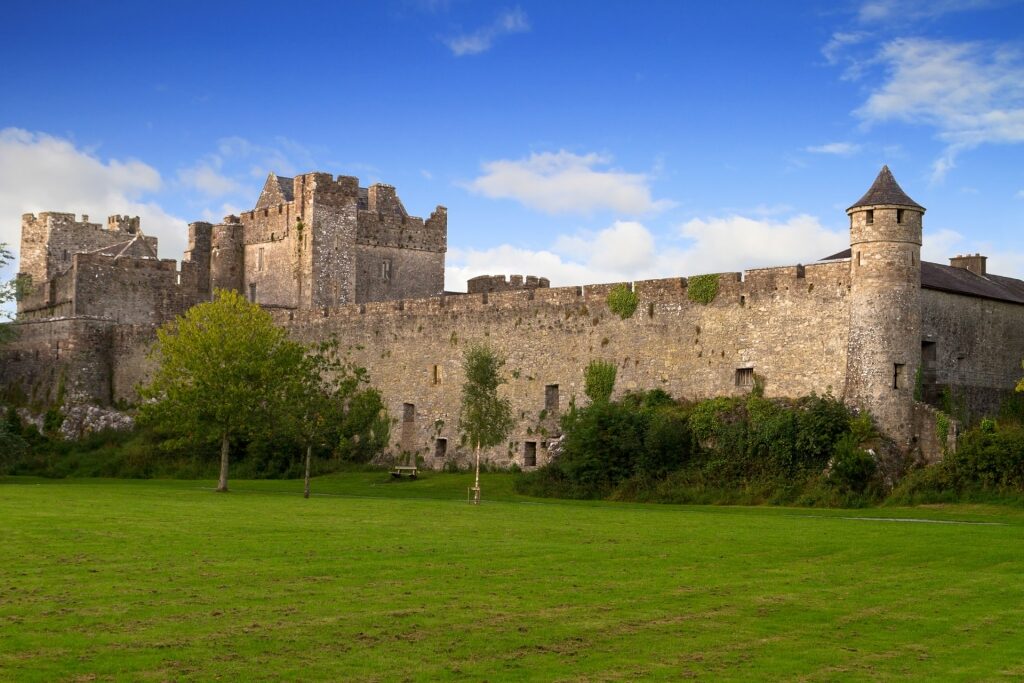
Cahir Castle
Because of its name, many visitors think that the Rock of Cashel is a castle, instead of a major ecclesiastical site. To see a real medieval castle, take in Cahir on its island in the River Suir.
Well preserved—and beautifully restored where needed—this Irish castle has a suitably turbulent history. It has seen battles and withstood sieges throughout history, well before it took its present form in 1599.
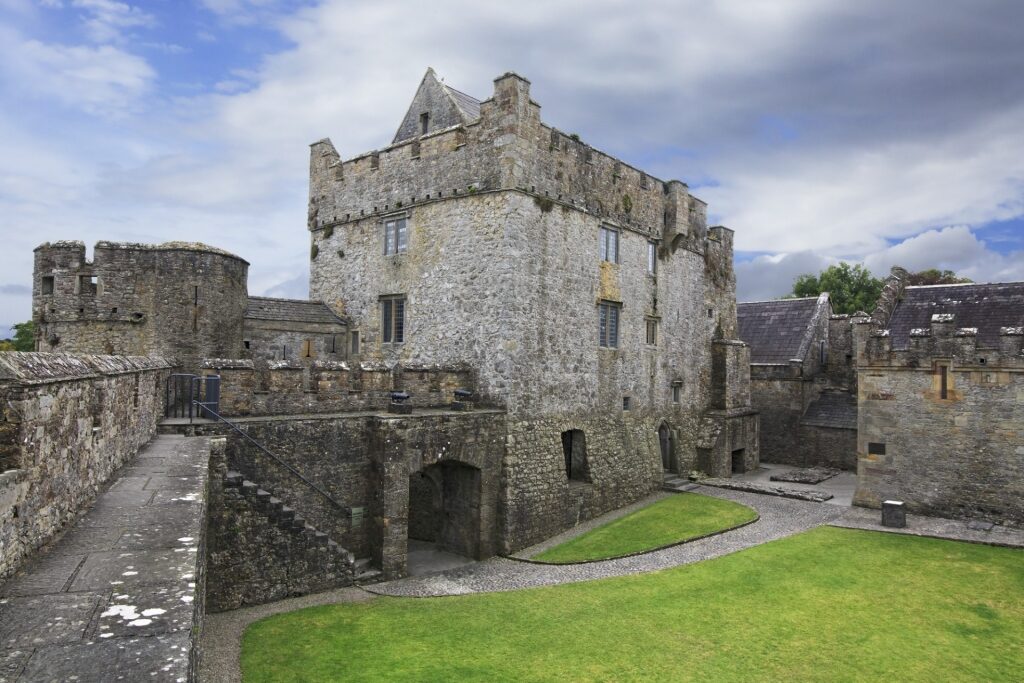
Cahir Castle
The castle’s picturesque appearance means it still witnesses sieges, albeit in its role as a star of epic films and TV. It was even awarded the European Film Commissions Network Location Award for 2021.
An excellent audio-visual show details some of its colorful history. However, its picturesque location alone will stir the imagination of anyone who sees it.
Buy a Piece of Waterford Crystal
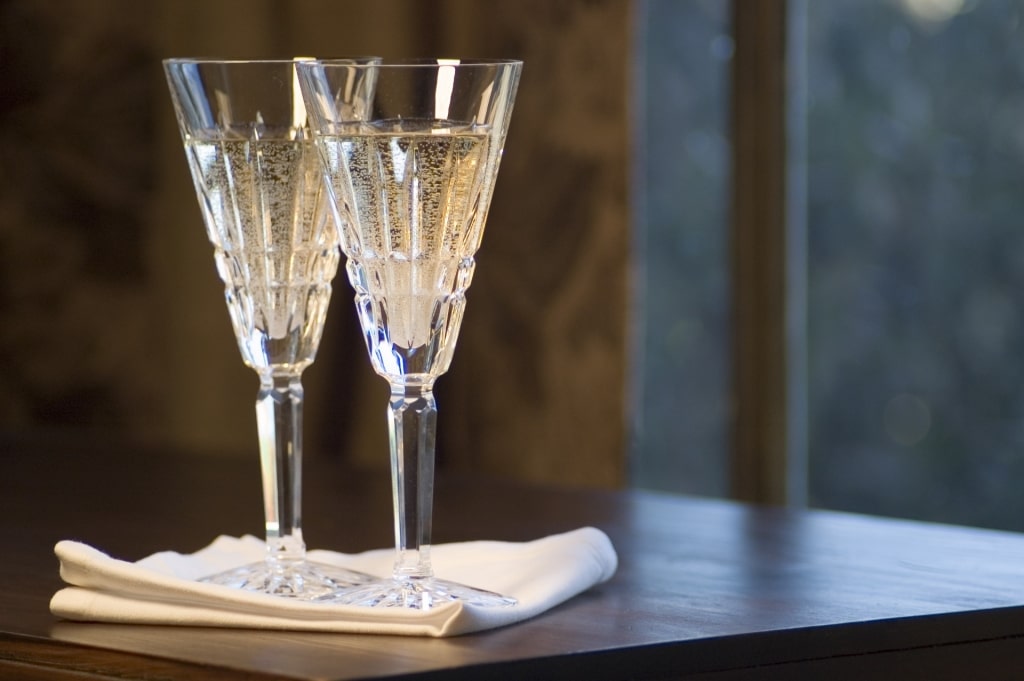
Waterford Crystal
Waterford Crystal may fall in and out of fashion, but it never goes out of style. And the skills involved in creating it remain jaw-droppingly impressive.
Take a factory tour to learn more about the fascinating process of blowing, molding, and cutting each piece of glass. It takes eight years of training for each cutter to learn the skills involved in cutting without breaking the crystal.
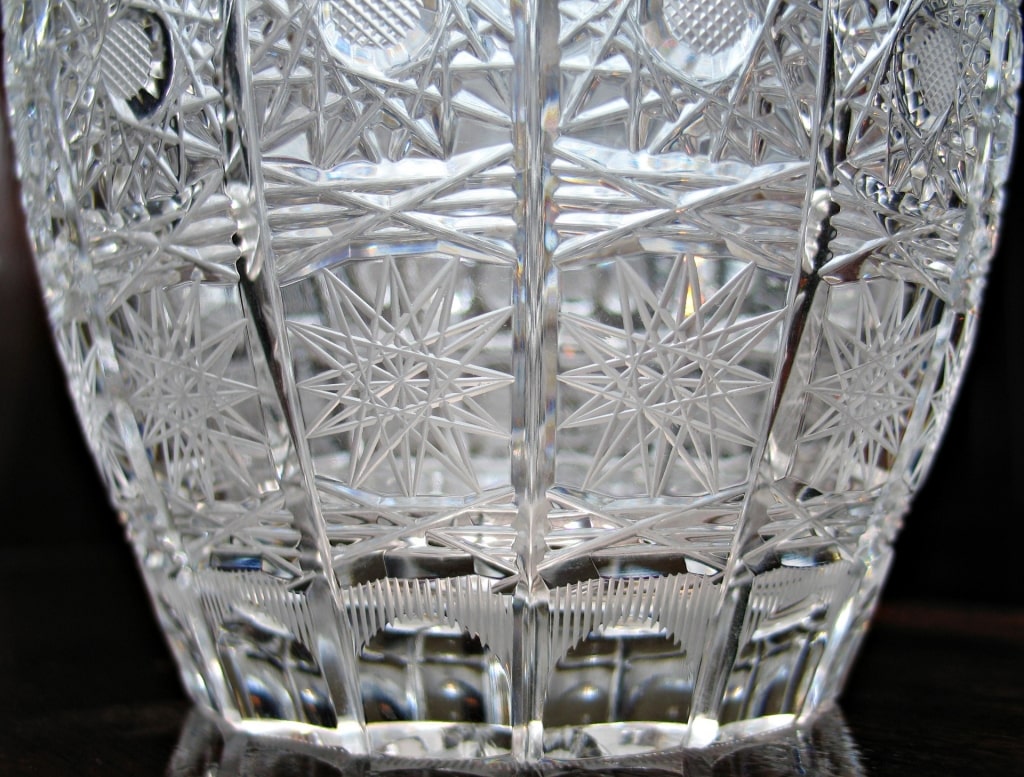
Waterford Crystal
Sculptors are equally adept at transforming a piece of glass into a fish, horse or other imaginative design. And engravers have the nerve-wracking job of adding intricate designs to trophies or other special pieces.
At the showroom, you can see some of the finest pieces produced by Waterford Crystal, including some unexpected treasures, such as a glass harp. Of course, there is also a shop if you want to take or ship a valuable memory back home.
Admire the Sculptures of Jerpoint Abbey
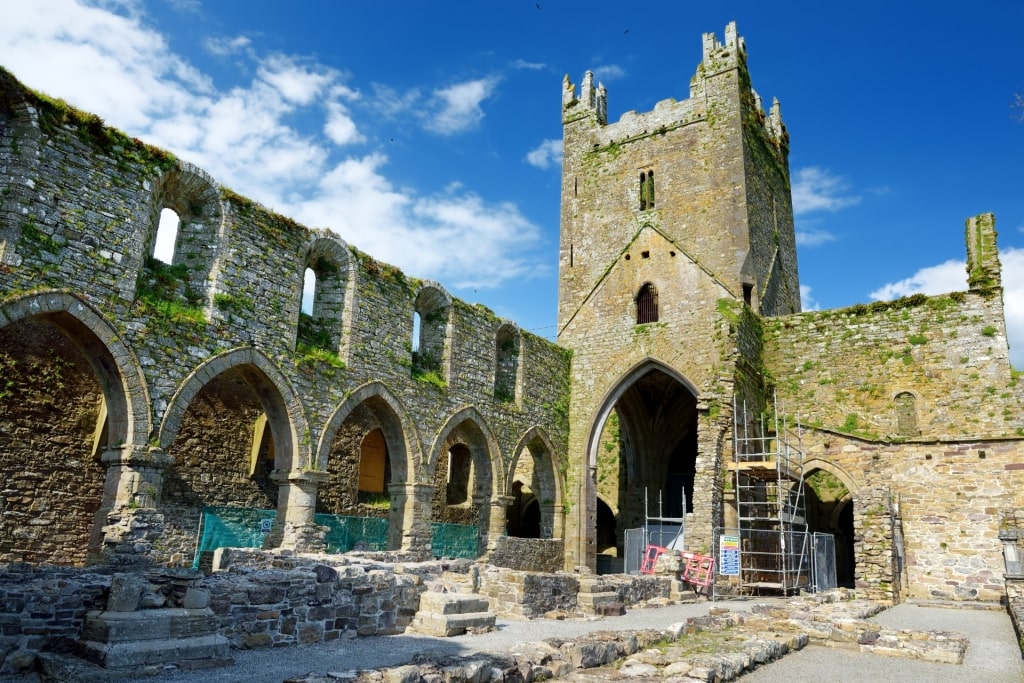
Jerpoint Abbey
Only 30 minutes outside Waterford, the late 12th century Jerpoint Abbey is renowned for its exquisite medieval carvings. Knights, damsels, mythical animals, and a man nursing a stomach ache are among the detailed carvings that could keep you fascinated for hours.
The abbey itself is a hulking ruin, seen at its atmospheric best when looming out of an Irish mist or rain shower. Enough remains to give a vivid picture of the daily life of a monk in Ireland during the Middle Ages.
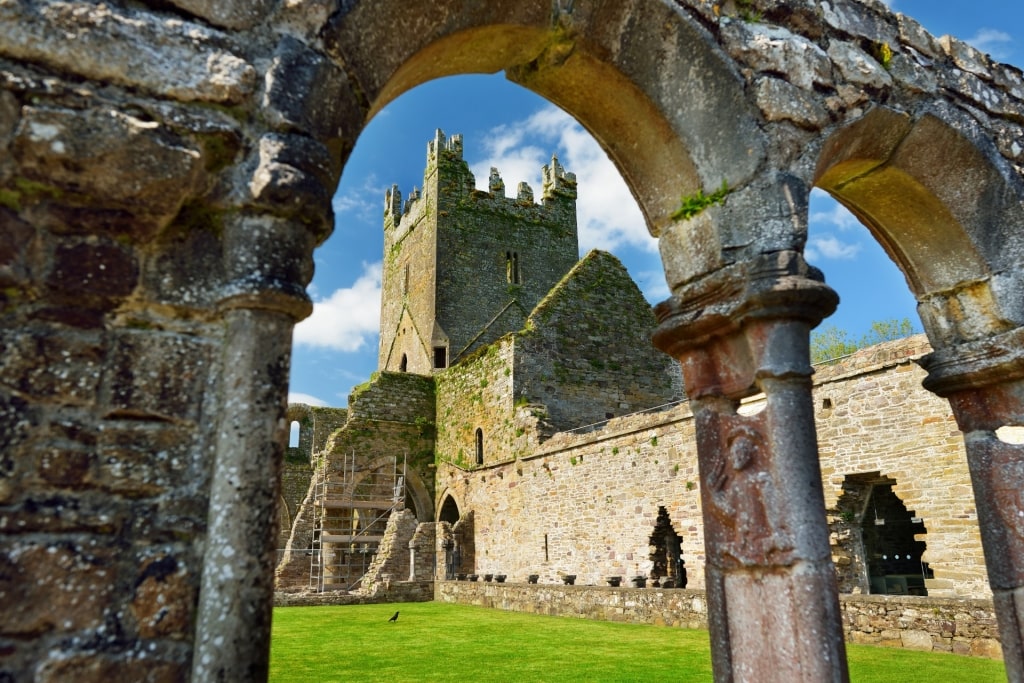
Jerpoint Abbey
The Cistercian kept their vows of poverty, chastity, and obedience here until 1541 when England’s King Henry VIII dissolved the monasteries. However, the Abbey remained a holy place for local grand families to bury their dead.
Their legacy is a number of well-preserved chest tombs, many adorned with sculpted “weepers”. You’ll need a guide or a good guidebook to recognise figures such as the apostles or the archangel Michael.
Have Tea at Waterford Castle
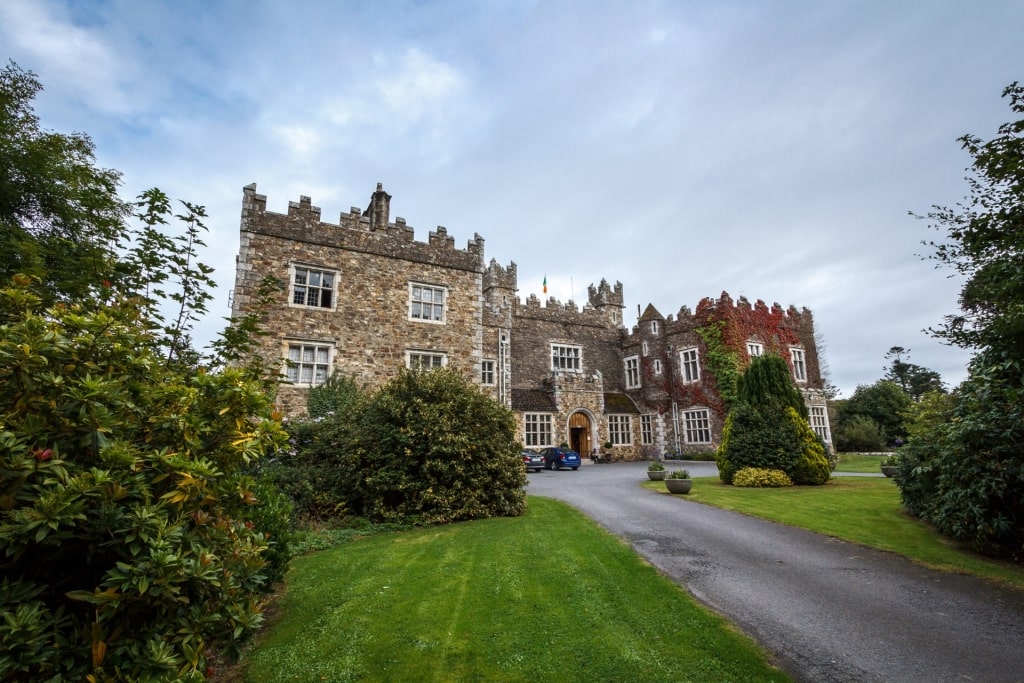
Waterford Castle Photo by Nico Kaiser on Wikimedia Commons, licensed under CC BY 2.0
Set on its own island, reached by a private car ferry, the luxurious Waterford Castle Hotel is a green oasis on the River Sur. Its 18-hole par 72 championship golf course is a major draw, as is its award-winning restaurant.
The hotel is a restored 16th century castle, with decor reflecting its historic past. Rich brocades and dark wood create a lovely setting for lunch, afternoon tea, or dinner.
The hotel boasts one of the best afternoon teas in Ireland, but booking is essential. To walk off any excesses, the island has a number of nature trails, and a lovely riverside walking path.
Cycle the Waterford Greenway
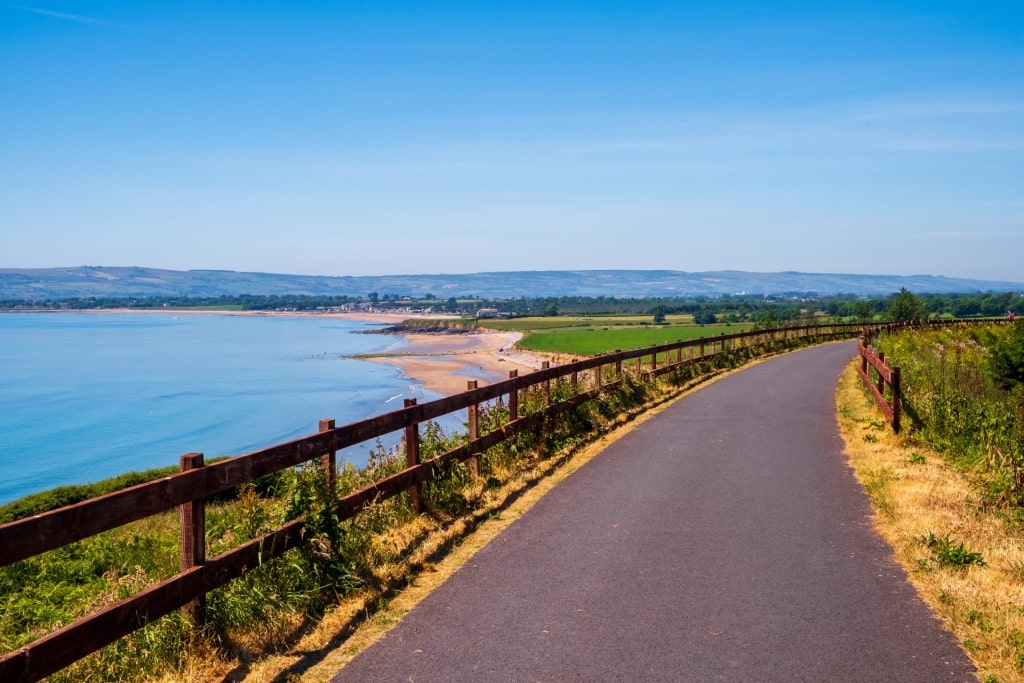
Waterford Greenway
Ireland has reinvented many of its old railway lines as spectacular walking and cycling routes, and the Waterford Greenway is one of the best.
Running alongside the River Suir for 30 miles from Waterford City to the coastal town of Dungarvan, it passes through some beautiful scenery.
The greenway is well signposted, and fairly flat, so it’s easy to walk or cycle any section in either direction. While a cyclist, especially one using an e-bike, can do the whole route in a few hours, you might prefer to take a smaller bite in an out-and-return section.
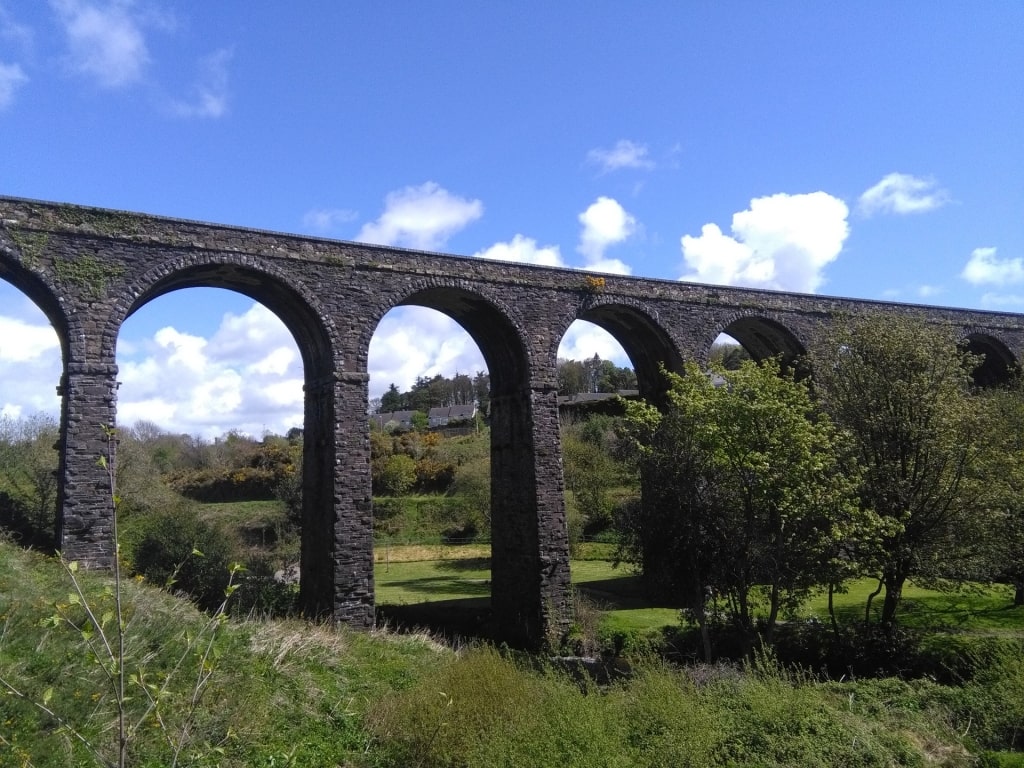
Kilmacthomas Viaduct
Taking your time is the best way to soak up the views of the Irish landscape, while exploring one of the villages along the way. Highlights include the colorful Mount Congreve Gardens, with a ruined Norman castle, the Ballyvoyle Tunnel, and the Kilmacthomas Viaduct, built by the Great Southern and Western Railway in 1878.
Explore Curraghmore House & Gardens
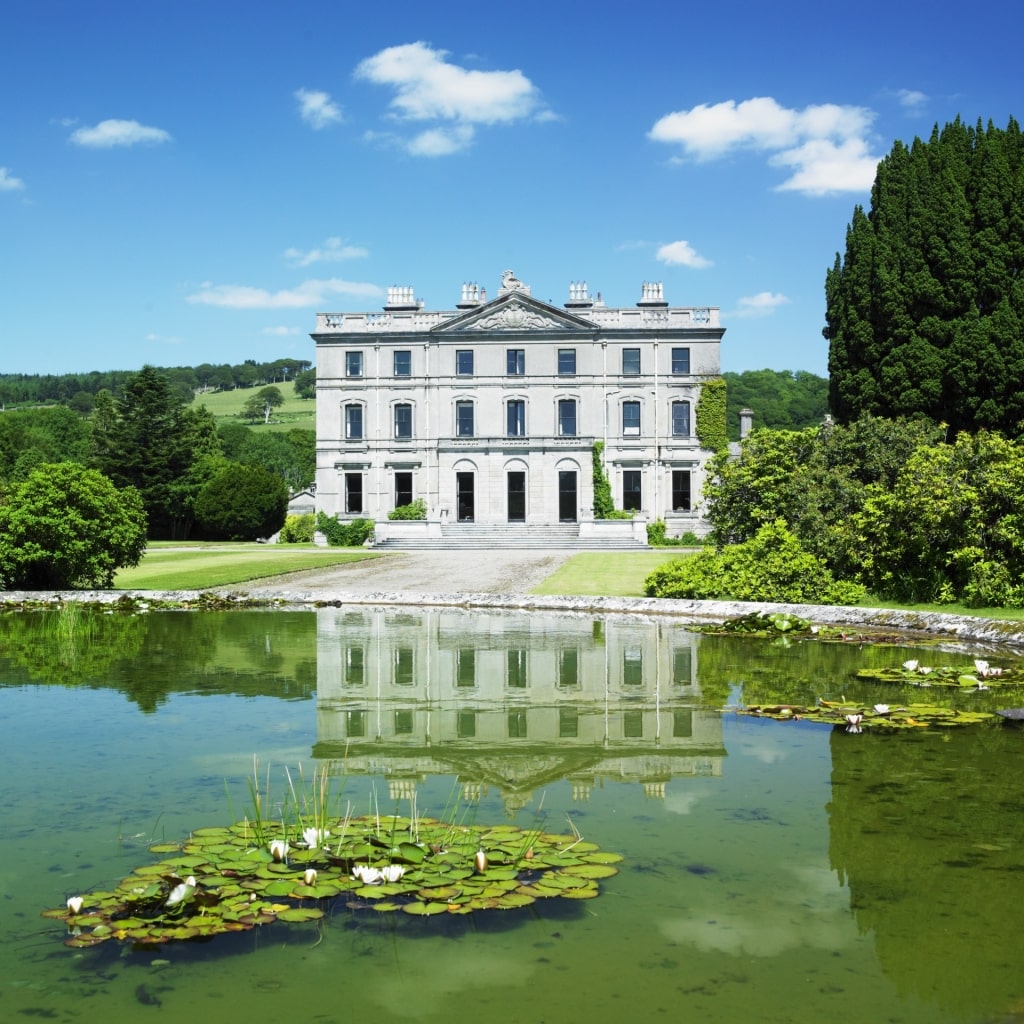
Curraghmore House & Gardens
The 2,500 acres surrounding the home of the Marquis of Waterford may be a fraction of the former 100,000-acre estate, but they are still one of the best places to visit in Ireland. The formal gardens and ancient oak woodlands would take days, if not weeks, to explore.
That’s before you even consider the house itself with its 800 years of history. It holds some of Ireland’s finest neoclassical rooms, including a splendid dining hall, and the rococo Drawing Room.
Apart from the grand rooms, you will remember details such as gongs, photo albums, and medals filling every corner. The house is still lived by the family, which gives it a very personal touch.
Outside, don’t miss King John’s Bridge, which is the oldest bridge in Ireland. A Sitka spruce overlooking it is a mere youngster in comparison, being planted around 1835, but is among the tallest trees in Ireland.
Experience the Dunbrody Famine Ship
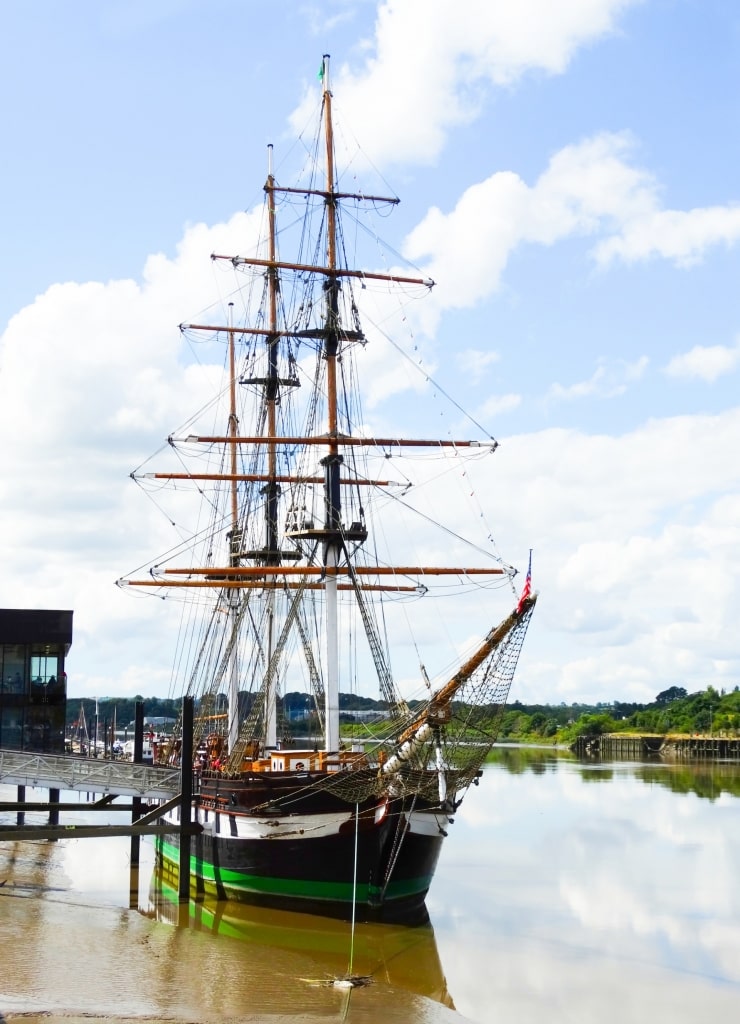
Dunbrody Famine Ship
The Irish Famine, or the Great Hunger, was a traumatic event in Irish and North American history. Out of a population of eight million, around a million died when the potato crop failed from 1845 to 1849.
By 1855, another two million people had fled Ireland, many on ships such as the Dunbrody. The original was built in Quebec, Canada, 1845 as a cargo ship but was soon refitted to carry passengers.
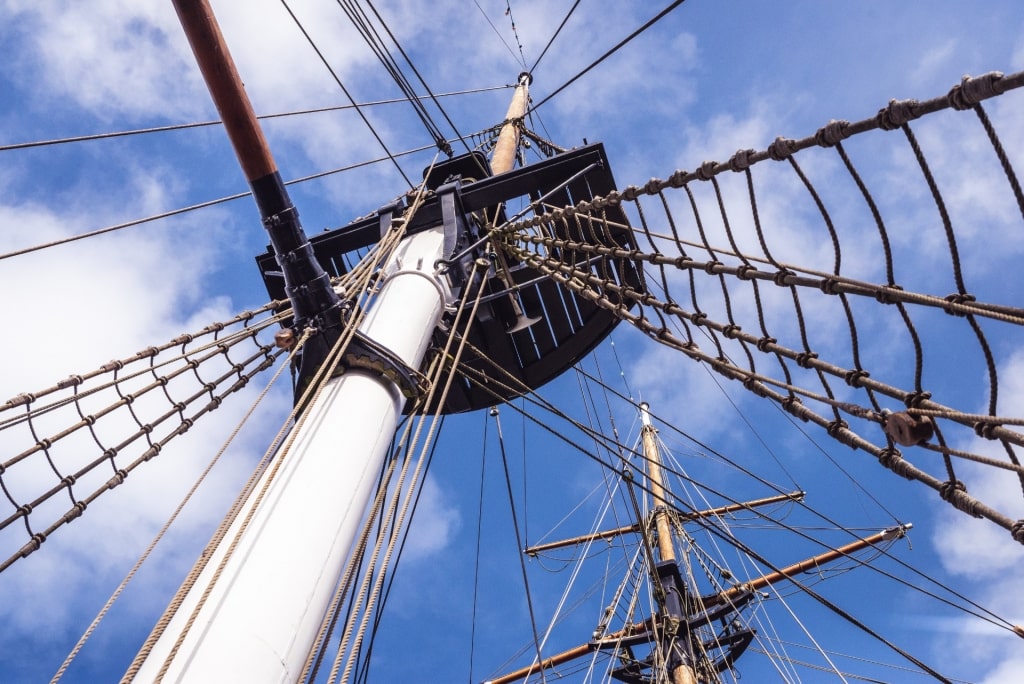
Dunbrody Famine Ship
This replica shows what it was like onboard for the month-long transatlantic voyage to North America. The tiny ship carried more than 300 migrants, most only allowed on deck for an hour each day to cook their own food.
Costumed guides bring to life the story of these ordinary people, mostly farm workers, who ended up in cities such as Toronto. The Irish American Hall of Fame here also celebrates the contribution their descendants, from Henry Ford to John F Kennedy, have made to life in the New World.
Walk Around Kilkenny Castle & Gardens
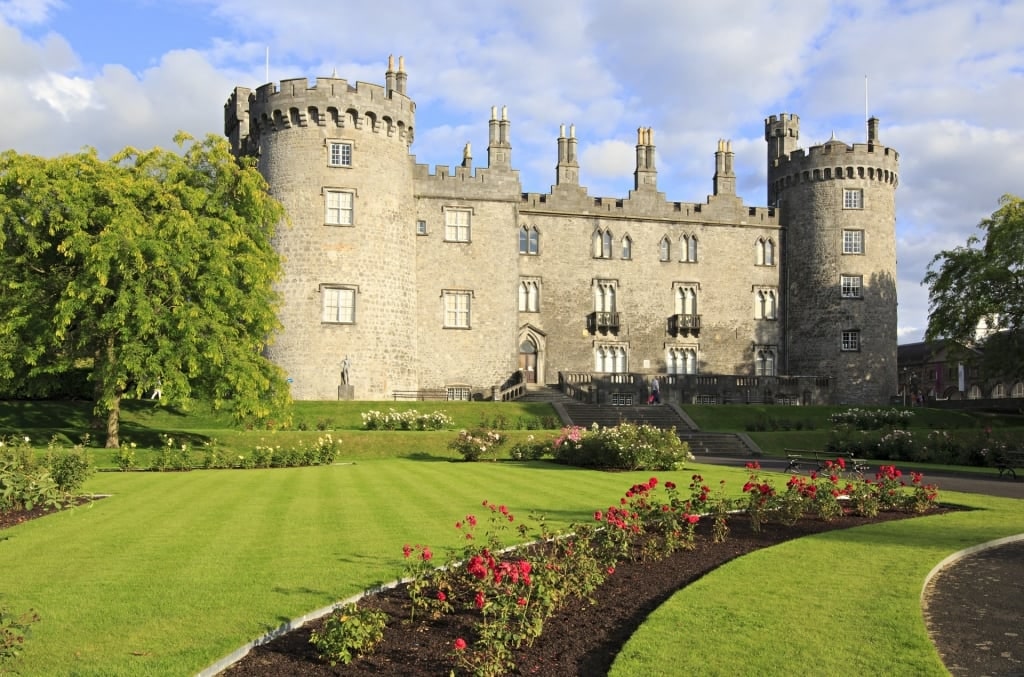
Kilkenny Castle & Gardens
Any castle is designed to be forbidding, but Kilkenny’s gray stone exterior hides a particularly magnificent interior. That’s partly due to Ireland’s Office of Public Works, which has faithfully restored its furnishings over many years.
Long the home of the Butler family (“long” meaning about 800 years), the castle was sold to the people of Kilkenny for a nominal sum in 1967. With its carefully tended grounds, it’s a treasured asset for the town and is located about 40 minutes from Waterford.
A showpiece inside is the Picture Gallery, with a soaring hammer-beam roof, and hand painted pre-Raphaelite figures. The Chinese Bedroom is another highlight, reflecting the passion for Orientalism that swept Europe in the 19th century.
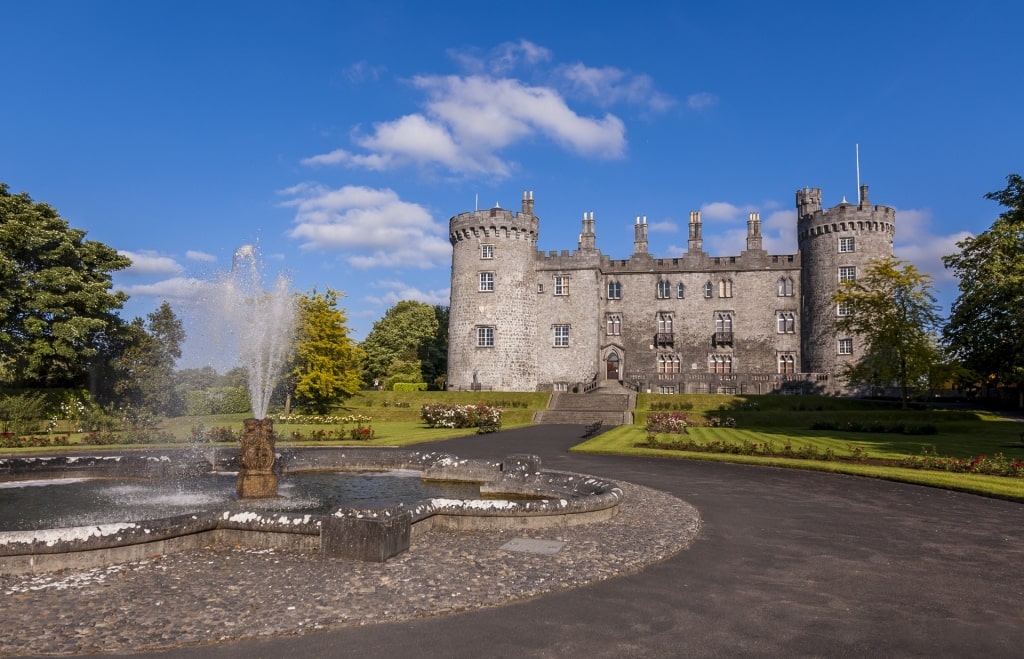
Kilkenny Castle & Gardens
Outside, the pretty grounds are a public park, where you may be lucky enough to see youths practicing the lightning fast and highly skilled game of hurling. Kilkenny holds the record for most All-Ireland Hurling Final wins, so saying it’s a local passion is an understatement.
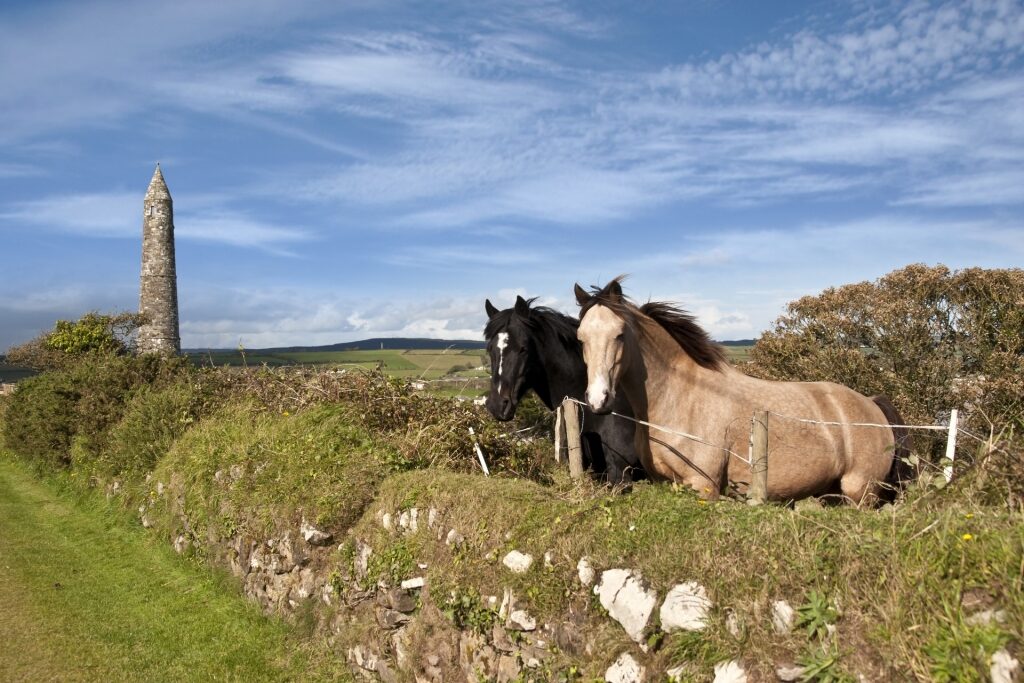
Waterford
Has this list of the best things to do in Waterford reminded you of how overdue your visit to Ireland is? Then browse Celebrity’s cruises to Waterford to find the perfect vacation that will greet you with “Céad Míle Fáilte” (One Hundred Thousand Welcomes).



